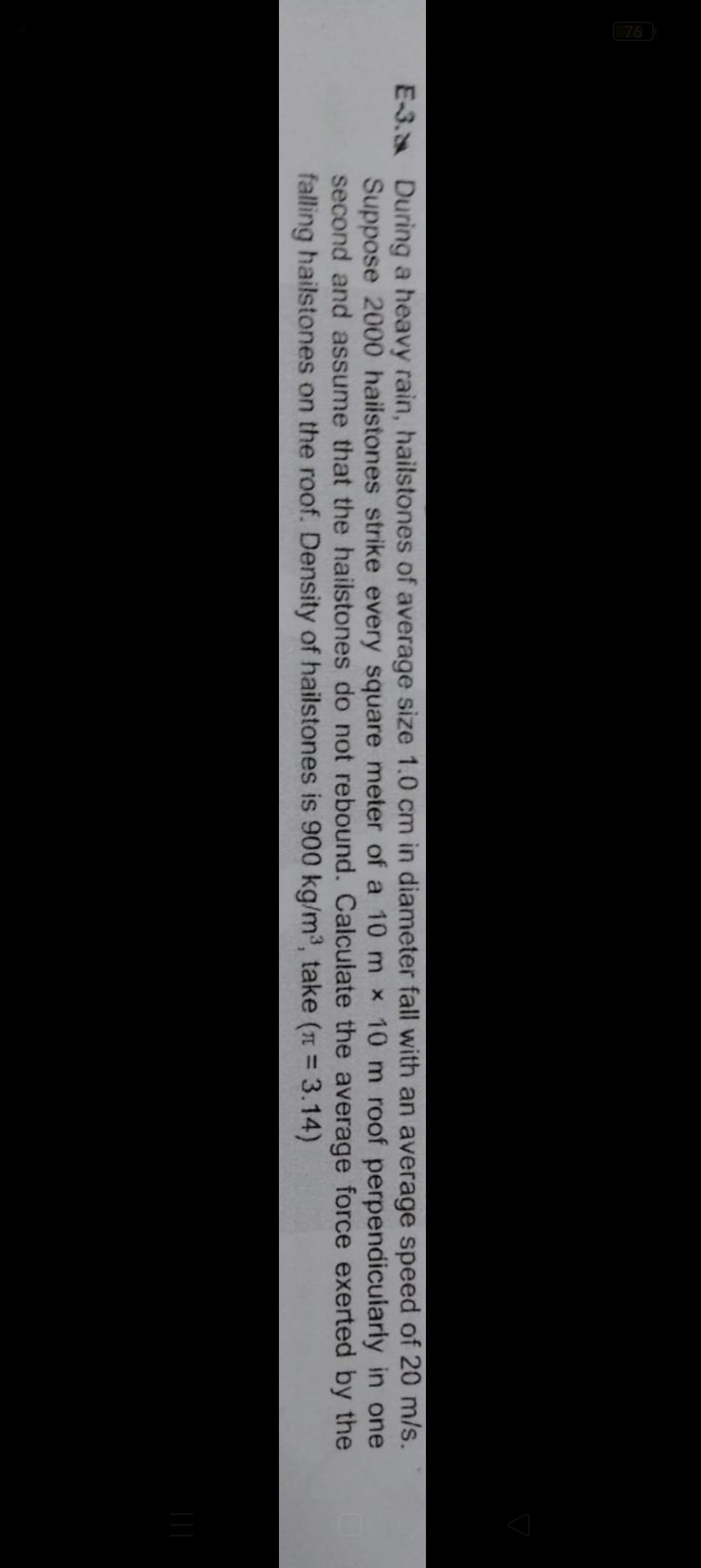Question
Question: During a heavy rain, hailstones of average size 1.0 cm in diameter fall with an average speed of 20 ...
During a heavy rain, hailstones of average size 1.0 cm in diameter fall with an average speed of 20 m/s.
Suppose 2000 hailstones strike every square meter of a 10 m x 10 m roof perpendicularly in one second and assume that the hailstones do not rebound. Calculate the average force exerted by the falling hailstones on the roof. Density of hailstones is 900 kg/m³, take (π = 3.14)

1884 N
Solution
The average force exerted by the falling hailstones on the roof is equal to the rate of change of momentum of the hailstones.
-
Calculate the mass (m) of a single hailstone using its volume (assuming spherical shape) and density:
- The hailstones are assumed to be spheres of diameter d=1.0 cm =0.01 m. The radius is r=d/2=0.005 m.
- The volume of a single hailstone is V=34πr3=34×3.14×(0.005 m)3=5.23×10−7 m3
- The density of hailstones is ρ=900 kg/m³.
- The mass of a single hailstone is m=ρV=900 kg/m3×5.23×10−7 m3=4.71×10−4 kg.
-
Calculate the change in momentum (Δp) of a single hailstone upon striking the roof, using the initial velocity (v) and the fact that the final velocity is zero:
- The initial velocity of the hailstones is v=20 m/s.
- The change in momentum for a single hailstone is Δp=−mv=−(4.71×10−4 kg)×(20 m/s)=−9.42×10−3 kg m/s.
-
Calculate the total number of hailstones (N) striking the entire roof per second by multiplying the number of hailstones per square meter per second by the total area of the roof:
- The total area of the roof is A=10 m×10 m=100 m2.
- The number of hailstones striking per square meter per second is n=2000.
- The total number of hailstones striking the entire roof per second is N=n×A=2000 hailstones/m²/s×100 m2=200000 hailstones/s.
-
The average force exerted by the hailstones on the roof is equal to the total rate of change of momentum, which is the total change in momentum per second. This is calculated as N×∣Δp∣ or N×mv:
- Average force Faverage=Nmv=(200000 s−1)×(4.71×10−4 kg)×(20 m/s)=1884 N.
